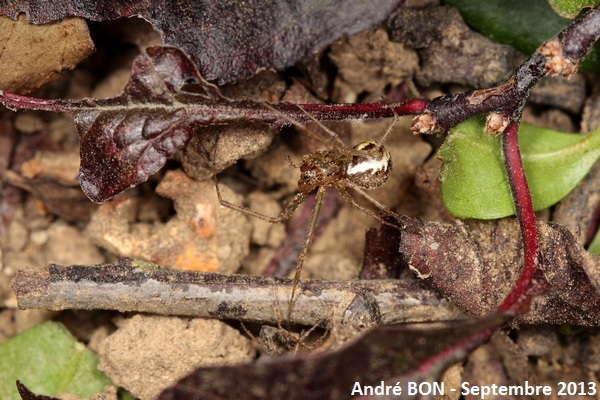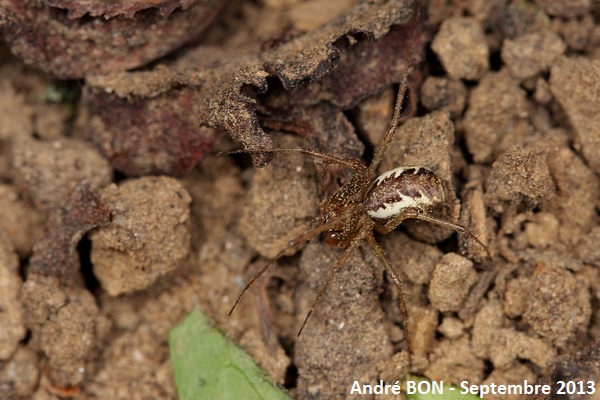

| Common Hammock-weaver (Linyphia triangularis (Clerck, 1757)) |


|
|
Scientific name: Linyphia triangularis (Clerck, 1757) Common name: Common Hammock-weaver French name: Linyphie triangulaire Order: Araneae Family: Linyphiidae Size: Males: 4.5 to 6 mm; Females: 5 to 6 mm. Biotope: Bushes and low growing plants, sometimes low on trees. Web: Dome-like web more or less horizontal. Many tangled strands run above to surrounding plants. Preys are knocked down by these strands and fall down on the web. Linyphia triangularis waits hanging upside down. Observation period: August to October. Geographic area: Palaearctic region. Introduced to the east of the United States. |
The Common Hammock-weaver shows a more or less pale brown yellow cephalothorax, bordered by a thin dark brown band and ornated with dark brown forked median stripe. The whitish abdomen shows a dark serrated band resembling a series of partially superposed triangles. The brown, grey or greenish legs bear many spines. In particular there is a row of spines on the inner side of the femurs on the fore legs. Males are often much darker and it is very difficult to see the band on the abdomen. The forked marking on the cephalothorax is always present. Linyphia tenuipalpis and Linyphia maura (a more Mediterranean species) are very similar to the Common Hammock-weaver. You can recognize them with the two or three short spines inserted in black spots on the inner side of the femurs on the fore legs. The Common Hammock-weaver shows, at the same place, a row of at least four spines and no black spot. Neriene radiata shows a cephalothorax circled by a pale band. |
| [To know more about the Common Hammock-weaver] [Next picture] [Top] |

|
This Linyphiidae was certainly put down on the ground when cutting the hedgerow. The forked stripe on the cephalothorax is visible on this picture. This view is not enough to evaluate the number of spines on the inner side of the fore femurs. You can discard the Linyphia maura which is not found so far north of the Mediterranean regions. There is a remaining doubt between the Linyphia triangularis species and the Linyphia tenuipalpis species. |
| [To know more about the Common Hammock-weaver] [Previous picture] [Top] |

|
You can better see the dorsal band of the abdomen on this second picture. |